Pearl might be known as a drum manufacturer, but they also produce a whole lineup of flutes.
So, what makes them so special? Why should you consider a Pearl flute?
Who are Pearl Flutes?
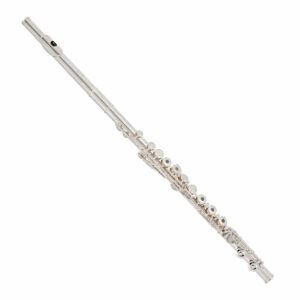 Pearl were initially set up in post-war Japan by the Yanagisawa family. They produced musical accessories but soon found a niche in the market for handmade flutes.
Pearl were initially set up in post-war Japan by the Yanagisawa family. They produced musical accessories but soon found a niche in the market for handmade flutes.
In the late 1960s, the first flutes were manufactured in their new Chinese factory. The innovations really ramped up in the early 1970s with the invention of the one-piece core bar and pinless mechanism seen as the first significant refinements in the Boehm flute in over 100 years.
So, what exactly are these developments and why are they good in a flute?
A one-piece core bar construction helps to alleviate a lot of the wear and tear that flutes generally suffer – usually on the high C key and the king post next to the F# key.
The one rod extends from the high C through to the king post, making for a more reliable and comfortable flute that needs less adjustment. Plus, it’s easier to service – definitely an advantage in the beginner flute market.
Pins are commonplace on wind instruments. They help to facilitate the action and they’re often made from materials such as blue steel. However, pins do have some flaws. Many wind players will have snagged clothing on these pins at least once! They also make it easier for perspiration and body acids to cause corrosion and bind the keys.
In response to this, Pearl have designed a revolutionary mechanism that combats the flaws of having pins. Their innovative mechanism bypasses these issues and additional bridge mechanisms help strengthen the construction further.
So, what’s in the range?
From piccolos to the contrabass flute, Pearl create flutes in a range of plating options, configurations, and with different engravings. So, where do you start?
Let’s dive into the different ranges…
Quantz flutes
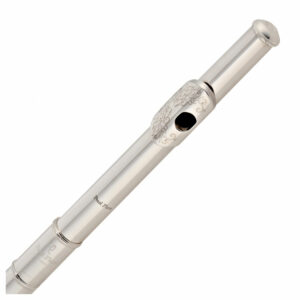 The Quantz series of flutes boasts French pointed arms. These add strength to the keys and were originally thought of as premium-level features.
The Quantz series of flutes boasts French pointed arms. These add strength to the keys and were originally thought of as premium-level features.
Within this range, there are a whole load of different flutes with different numbers, so where do you begin? Let me explain and remove the difficulty.
505 flutes – these flutes are all nickel silver, including the keywork, the headjoint, body, etc.
525 flutes – same as the 505 but with a silver lip-plate.
665 flutes – same as the 525 but the whole head is silver.
765 flutes – same as the 665 but with a silver body. All the keywork is nickel silver.
Shop now | Pearl Quantz series
Dolce
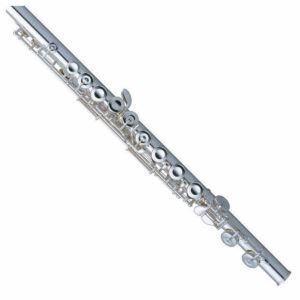 Dolce flutes are more premium than the Quantz series, with a particular focus on the accuracy of pitch and flexible articulation.
Dolce flutes are more premium than the Quantz series, with a particular focus on the accuracy of pitch and flexible articulation.
Another unique quality of these models is that they’re handmade for aspiring artists.
Within the series, there are the 695 and 695 Vigore models. These bring superior features to an affordable price point. You can add other premium features too, such as additional trill keys, a B foot, or even a 3K gold alloy lip plate! A Forza headjoint then provides greater projection.
These flutes all have a silver headjoint and nickel silver bodywork and keys.
There are also various configurations available, such as B foot options.
Shop now | Pearl Dolce series
Elegante
The Elegante range is one of Pearl’s best-selling series. They’re all handmade, boast precise intonation, and project really well.
One of the upgrades from Dolce flutes is that the body of the flute is silver, rather than nickel silver.
As with the Dolce range, you can add extra bling with the 3K gold or more mechanisms.
Shop now | Pearl Elegante series
Flute configurations
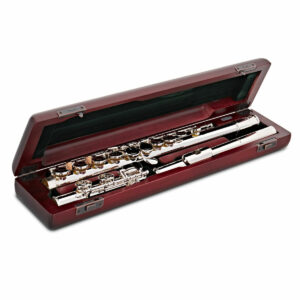 As well as Pearl’s various ranges, there also letters to consider:
As well as Pearl’s various ranges, there also letters to consider:
E – split E mechanism
U – curved head option
R – open holed
B – B foot option
As you can see, there are many different options, but what do they all mean? Which is best for you?
Split E mechanisms are particularly helpful when playing the high E in the third octave. It essentially ‘splits’ the G key into two that close for G, the second key will also depress when you press E. This helps to improve the stability of the top E and makes the sound easier to produce. However, it can also increase the cost and the weight of a flute, and it might not be for the ‘purists’ of the flute.
A curved head is a great option for younger beginners and those whose arm span isn’t quite as long. It’s easier to reach and brings the flute close to the body. What’s more, the straight head is included and can be swapped at a later point.
Open holes are ideal for more advanced players and really help with extended techniques. One of their benefits is that the pad seals the tone hole a lot more easily, making sound easier to create. For open-holed flutes, your technique needs to be more exact. Small plugs are supplied with open-holed flutes too – you can carefully remove them to help with the transition.
A low B foot might also be a consideration if you want to play a more contemporary repertoire. It does add an extra note and a bit more weight to the flute but might be worth it if you want to practise a wider range of musical styles.
Find out more
Hopefully this guide to Pearl flutes has given you a better idea about which model is suited to you. With their array of different options, all of sublime quality, you’re bound to find the perfect one.

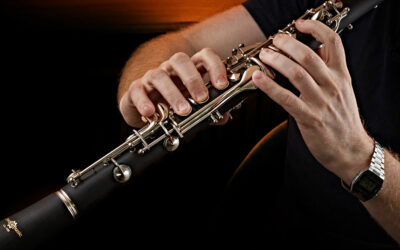

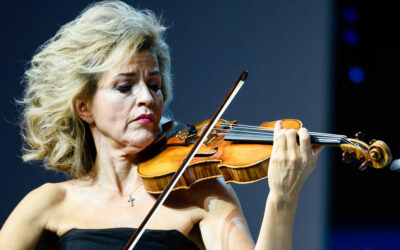

0 Comments